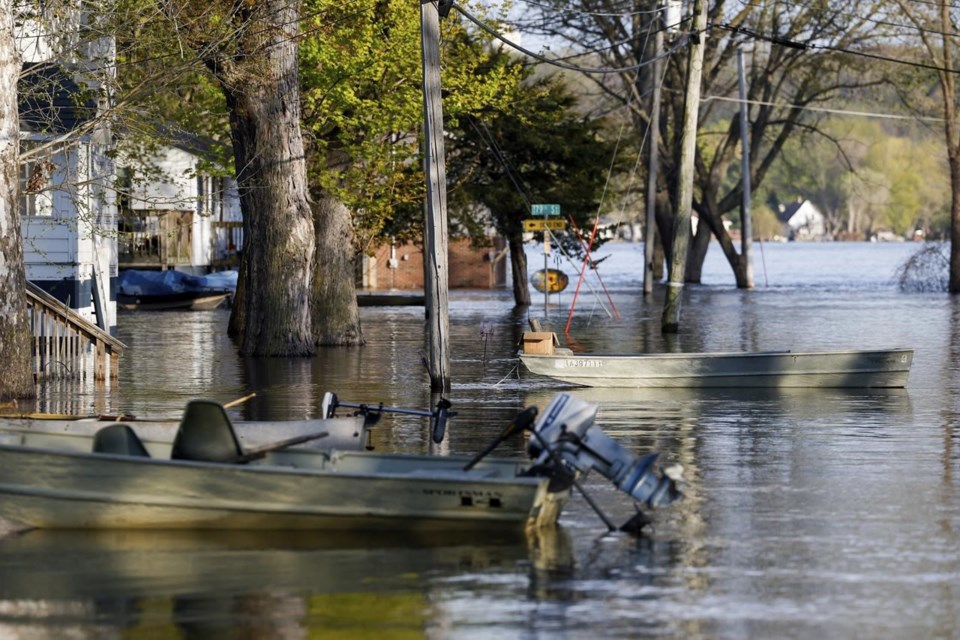DAVENPORT, Iowa (AP) — People living along the Mississippi River watched warily Sunday as water levels rose in southeast Iowa and northwest Illinois, awaiting spring crests as floodwaters began to slowly recede and reveal damage in areas further north.
The National Weather Service said many of the crests across the region this season will rank in the top 10 of all time, but will remain well below the records set in past floods. Officials in many cities along the river are optimistic they'll be able to either keep the floodwaters at bay through a combination of floodwalls and sandbags or contain it to low-lying park areas. But some homes close to the river have been damaged.
“Luckily we’ve had relatively dry weather over the last week or so and not expecting much in the way of rainfall as well,” National Weather Service meteorologist Tom Philip said. “So it’s coming through as forecast for the most part.”
The river peaked in the Dubuque area Saturday at 23.03 feet (7 meters)— well below the 25.7 feet (7.8 meters) record — but officials there were grateful to have the floodwall the city built 50 years ago in place.
Without that floodwall, the city would be facing significant problems, said Deron Muehring, a civil engineer for the city of Dubuque.
“The floodwaters would be up to 6 feet deep in the Port of Dubuque and more than 7 feet deep in the south port,” Muehring told the Dubuque Telegraph-Herald.
The river is expected to crest at around 21.6 feet (6.6 meters) on Monday in the Quad-Cities area, where several neighboring cities sit along the Iowa-Illinois line. Some roads and parks near the river are closed. The record at that spot is 22.7 feet (6.9 meters).
Once the river crests in an area, it may take up to two weeks for the floodwaters to fully recede.
In recent days the Mississippi flooded low-lying parks and trails in La Crosse, Wisconsin, and flooded streets and basements in the town of Campbell on French Island, which lies in the Mississippi and Black rivers just west of La Crosse.
The river crested at 15.9 feet (4.8 meters) on Thursday, almost 4 feet (1.2 meters) above flood stage and the third-highest level ever, but it has been receding by the hour since.
About 60 miles (95 kilometers) downstream, flood waters covered streets in Prairie du Chien, Wisconsin. The river crested there at 22.9 feet (7 meters) on Friday, which also the third-highest crest ever. Officials posted guidelines for disposing of sandbags and other debris on the city’s website as the river levels started to fall.
Melissa Tairi, a Prairie du Chien resident, told KCRG-TV she was dealing with two to three feet (half a meter or more) of water in her home's basement and that neighbors came over and helped pile sandbags up over her driveway. “The water in the basement is staying about the same" despite efforts to pump it out, she said.
In the same city, Donovan Bruns, a bartender at Rowdy's D&D Bar and Grill, told KCRG that anxiety levels are running high because of the rising waters.
“The stress level is high. If the water makes it inside the bar, we're worried that we'd end up having to close the business," he said.
The flooding is expected to ease as the spring surge of water from melting snow works its way further down the 2,300-mile (3,700-kilometer) length of the river on its way to the Gulf of Mexico. Most of the tributaries in Iowa, Illinois and other Midwest states are running lower than usual, so they won't exacerbate the flooding by dumping large amounts of water into the river.
The Associated Press



